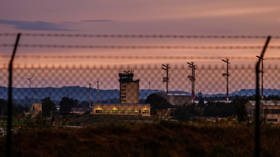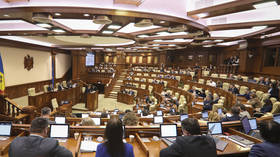Lockdown extended, but tests lagging: Where does India stand after 21 days of shutdown?
India is embarking on an 18-day extension of total lockdown as confirmed cases of Covid-19 broke the 10,000 mark — but have efforts to curb the spread of the virus been working and are the official numbers truly accurate?
PM Narendra Modi appealed to 1.3 billion Indians on Tuesday to obey the stringent lockdown rules for almost another three weeks. “These measures have come at a huge price, but the value of your lives is supreme,” he said. With the virus having already spread to half of India’s 718 districts, it remains critical that people take the lockdown seriously.
Testing lagging behind
The number of confirmed coronavirus infections in India stands at 11,439, with 9,756 of those cases still active, according to government data. The number of deaths from the virus stands at 377. As in most countries around the world, the numbers of infections — and indeed deaths — could potentially be significantly higher, as not all cases are reported and recorded.
Also on rt.com Indian cop gets hand CHOPPED OFF amid scuffle with blade-wielding men defying Covid-19 lockdownOne thing that seems to be indisputable, however, is that with the second-largest population in the world, India is not testing citizens at the rate it should be — and it’s possible that the seemingly low numbers of infections could be a reflection of the lagging testing. Indeed, India has carried out only 200,000 Covid-19 tests so far — in other words, it has tested only 0.01 percent of its population.
That’s a strikingly low number in comparison to the US, for instance, where almost 3 million tests have been carried out — and even with those far bigger numbers, experts say the US is still falling far short (having tested only roughly one percent of the population). Spain and Italy — the worst-affected countries after the US — have carried out 350,000 and one million tests respectively.
While the lockdown measures implemented by Modi are harsh to bear, they exist for a reason. Widespread contagion in a country of 1.3 billion, where many citizens live in tightly-packed slums making social-distancing almost impossible, would be catastrophic. The virus has already spread to many of India’s slums, so keeping it as contained as possible is paramount. Cases in the Mumbai slum of Dharavi, home to about one million people, rose to 55 on Tuesday — with 7 deaths.
Lockdown with exceptions?
Yet, lockdown without ramped-up testing seems to make little sense if officials want to know the true extent of the spread. Dr. Raman Gangakhedkar, of the Indian Council of Medical Research (ICMR) has assured Indians there is no reason to be scared and that the country has enough stock of kits to test for the next six weeks. Not everyone is convinced that the government’s strategy is working, however. Former leader of the Indian National Congress party Rahul Gandhi tweeted Tuesday that India is "critically short" of tests and that "mass testing" is key to fighting the virus.
Also on rt.com Doctors TAKEN HOSTAGE in Kashmir after attempt to screen man for Covid-19 goes awryGandhi has also advocated for a "smart" upgrade to the lockdown by using ramped-up testing to isolate Covid-19 hotspots and allowing businesses to reopen in other areas to mitigate some of the economic impact.
There are signs that plans are afoot to implement a partial reopening of business in some areas. Reports this week suggested that Modi's government will split the country into green, orange and red zones depending on the number of cases in each area — and that certain businesses will be allowed to reopen in the lower-risk green and orange areas, with social distancing measures still in place.
Economic devastation
The eagerness to reopen businesses where possible is unsurprising, given the economic impact the world's largest lockdown is slated to have. Global consulting firm McKinsey & Co has warned that India’s economy could contract by as much as 20 percent in the first quarter of the year. Annual economic contraction could hit 10 percent if the virus spreads rapidly and restrictions need to remain in place for months, it said. The country's aviation, auto, construction and real estate industries would take the biggest hits due to plummeting demand, McKinsey added. The overall unemployment rate has already doubled to 14.5 percent since Modi imposed the first lockdown, as millions of workers suddenly found their industries completely shut down.
Also on rt.com India & Pakistan may reopen some crucial industries amid Covid-19 lockdownsAnother sector suffering under the lockdown is the newspaper industry. The Indian Newspaper Society has written to the government seeking urgent assistance to keep it afloat, saying that it has been hit by a "triple whammy of coronavirus, plummeting advertising and customs duty on newsprint" leading to the "unimaginable situation" of the domestic newspaper industry standing on the brink of collapse.
There is little way to know if India’s current official numbers are accurate, but if the examples of other nations are any indication, the only way to ensure the numbers are as accurate as possible in the coming weeks is to dramatically increase testing by casting the net far wider than it has been so far.
Like this story? Share it with a friend!














